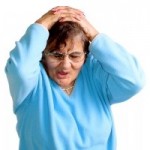
An examination of the quality of life and changes in behaviour for a cohort of 49 people with intellectual disabilities and self injurious behaviour (SIB) over time. 84% of the sample continued to self-injure nearly 20 years on, and whilst a number of people had moved from hospital in the period their SIB had not reduced.
More people were receiving psychological treatment, more were also receiving anticonvulsant and antipsychotic medications. The authors conclude that their findings add to the growing evidence of extreme chronicity for SIB and the relative lack of impact of treatment. They suggest the evidence implies the need for early intervention if SIB is to be eliminated long term.
The Chronicity of Self-Injurious Behaviour: A Long-Term Follow-Up of a Total Population Study, Taylor, L. et al, in Journal of Applied Research in Intellectual Disabilities, 24: 105–117.

My son has a learning disability, cerebral palsy and controlled epilepsy. My son used to chew his finger when he became anxious about anything, often to the point where it became ugly and sore. This self harming only materialised after he left school and when his care was solely managed by social services. (he is now 39 years old). Leaving education and entering social care was like falling off a wall! Although eventually he did become resigned to attending a day centre and he did tolerate it. His finger chewing only happened when something upset him in the centre, (usually cancellation of a session he enjoyed). Unfortunately, when our LA decided in 2003 to close its day centres and began to run them down, (more cancellations of sessions), my son’s self harming began to increase. Our LA’s ‘out in the community’ schemes left my son anxious and worried and he missed the stability of going to his day centre. Consequently, he has chosen now not to attend any day services, and spends his days at home with us (his parents). We do try to do activities with him to keep him stimulated, but it can sometimes be tiring. However, his finger chewing has stopped all together and his finger has healed completely.
My conclusion to all this is that in my son’s case, and I expect for many others, self harming is his way of telling us that he does not like his quality of life. I do not believe medication is the answer. I believe that if professionals (psychologists and psychiatrists) could address the root cause of his anxiety, i.e. be able to influence local social services to deliver better services. my son, at least, would not have been a self harmer. It seems the only power the medical profession have is the power to prescribe the chemical cosh that these people end up with. I have refused to do that to my son.
Nicotine a novel treatment for autism :http://www.autismseizureselfinjuriousbehavior.com/
Nicotine transdermal patch shown to be helpful for others with intraccable self injury. Also, keep in mind those chronically given psychotropics and SNRI’s and benzodiazepines are toxic. So of course they are still self abusing. Imagine how you would feel after your liver and kidneys have been overloaded with a copious amount of drugs for years. Drugs used to treat SIB often mask underlying issues fueling SIB. Undetected medical issues should always be ruled out before embarking on aggressive drug therapy. Pain and discomfort from the very drugs given to people for self-injurious behavior often further fuel self injurious behaviors. Natural therapies should be used in conjuction with conventional treatments to mitigate side effects.
Dear Kim,
Thanks for your comment. We have blogged extensively about the use (and overuse) of psychotropic medications in people with learning disabilities and challenging behaviour and also have pointed to a number of studies that show encouraging results for positive behavioural strategies. Your point about the need for professionals to consider potential physical causes is well made and supported by the evidence, you should check out this post from earlier in the year http://www.thelearningdisabilitieself.net/2011/07/13/call-for-guidelines-on-role-of-physical-conditions-in-challenging-behaviour/
john